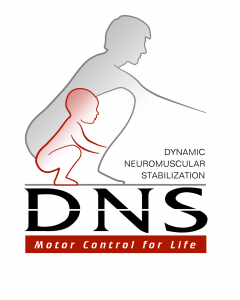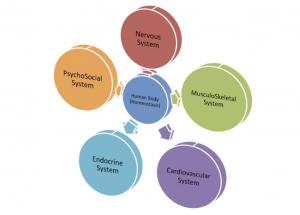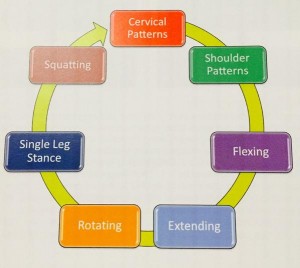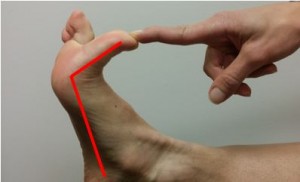The overhead squat is a coveted screen and assessment tool used by many in the fitness, strength community, and rehab worlds. Many live and die by this movement, and others do not place much priority on it. This combination will look at my own experiences and observations in the overhead squat, along with providing pragmatic application of exercises that will hopefully aim to improve your movement capacity in the squat.
Enjoy!
—-
There are many different ways to identify how to “score” the overhead squat – I choose to follow an FMS-based instruction towards the overhead squat, as it allows me an easier component towards bucketing and placing athletes in certain groups. Over my tenure at Cressey Sports Performance, I’ve had the pleasure of seeing a relatively large amount of athletes, on top of providing an individual program to cater to their specific needs. This is an experience that is unique to this facility, because many times coaches can look at a large population of individuals, but cannot provide the individual instruction or exercise selection necessary in order to improve outcomes.
The numbers of adequate overhead squats were staggering – over 115 squats and only 12 (twelve) squats were at industry standard. The other 103 squats were below standard or had other complications in their other movement patterns which limited the squat!
Those who scored “3’s” on the Overhead Squat were either young, relatively hyper mobile in comparison to their other peers (especially in the hip region), and interestingly, played multiple sports (more than just one sport such as only baseball).
Now the reasoning for a lack of ability to perform an overhead squat can be traced to several ideas:
- Your joints don’t allow it.
- Your tissue quality doesn’t allow appropriate lengthening and shortening in this movement.
- You are unfamiliar with the movement.
- Your brain is limiting you in some capacity due to pain, novelty of movement, or some other threat.
- Your issue is not the squat – it is higher up in terms of movement patterns.
(With respect to the above, I’d like to assume that almost all of the individuals coming into CSP are pain free.)
- If your joints don’t allow appropriate motion because of one hard structure bumping into another hard structure, that will be difficult to improve an overhead squatting motion to past 90° of hip flexion.
- If your tissue quality is relatively dense and possibly fibrotic, well then that could limit your ability for your muscles to be pliable. Relatively less dense muscle quality can relate to improved neural connections as these drivers.
- Many times individuals simply have no pre-conceived notion of what an appropriate squatting movement pattern consists of, so naturally their performance on the screen is limited or poor.

If your brain perceives threat in some manner, then perhaps changing levels at the hip joint will cause some type of input into the brain that says, “Don’t do this! It might hurt!” There are tons of ways to reduce threat (if you need to), so making sure you are in a positive environment (to take care of the psychological component), safe and appropriate environment and equipment (to take care of the physical component), along with using the right exercise for the right individual will hopefully take care of the issue of threat perception.

And finally, the overhead squat is in actuality, my least concern of a movement pattern from a screening perspective. There are actually several other movements that I’m more concerned about, on top of owning breathing, and more importantly several other athletic movement endeavors, such as skipping, shuffling, sprinting, throwing, etc.
The small parts of the overhead squat are actually addressed in detail in other movement patterns from another assessment process, other tests, and even screens. In this case, the small parts that comprise the bigger parts of the overhead squat are just that – mere minutia in the grand scheme of a total screening and assessment process.
Despite having a limited overhead squat pattern…
- Will your athlete be successful in his or her sport?
- Will your athlete still have immense amounts of force production capabilities?
- Will your athlete be able to control other motoric movement patterns?
I’m not saying completely ignore the overhead squat, but placing an immense amount of priority on whether or not someone can perform well when screening for the overhead squat correctly is not a big deal.
To re-emphasize this for you, I’ve done over 115 formal assessments, and an unknown amount of informal assessments (for staff, interns, friends, etc) while only at CSP, and I’ve seen only 12 overhead squats that have gone for par.
That is only 10% of the individuals that have come through the doors, having an adequate standard of movement for one test (out of several movements that were also assessed and screened).

So 90% of the other population that I’ve assessed have had poor squat patterns.
This does not mean I exclude the squatting motion from their exercise program – it just gives me better information on how to address their specific and individual problems.
With ALL of this in mind, now I can introduce an exercise combination that I’ve found lots of success with, as it address several things all at once – a catch-all combination to use some cliche phrases.
Reverse Inchworm to Overhead Squat
This exercise catches a lot of things all at once:
- Challenges anti-extension movement
- Upward scapular rotation
- As you sit back, it catches hip flexion
- As you rock back into a squatting pattern, there is sensory input so you can find more ankle dorsiflexion
- There is input as you rock back as well for great toe extension, which is crucial for acceleration and gait purposes

Prying Goblet Squat with Breathing
The next component in this exercise combination talks about:
- Owning a position of deep hip flexion
- Improving the activation of the hip external rotators as you rock the kettlebell/dumbbell up and down
- On top of owning breathing patterns.
Programming for Building Up Your Squat
I refer to “building up your squat” because you are doing so from the ground up. First you have a movement pattern that forces you to move backwards – something that doesn’t happen too often in a commercial gym setting, and then own it with breathing and heavy weights.
If you’re programming this, you probably don’t need it too much to improve upon your squat. It’s like taking medicine, you don’t need a full week of over-the-counter medicine to improve symptoms, but maybe 2 days of it plus good sleep will do the trick.
Just like that analogy, maybe you only need a few days of this exercise combination in order to improve your movement patterns, instead of a full month or year of “corrective exercises!”
With this in mind, see how this feels in the beginning of your day, or at the beginning of your exercise program as follows:
A1. Reverse Inchworm to Overhead Squat – 2×5
A2. Prying Goblet Squat with Breathing – 2×5 Breaths (Inhale + Exhale)
As always,
Keep it funky.

